Legend has it that Sala was on a hunting mission at the Sahaya mountains when he heard the cires “Poy Sala” – “Strike Sala” by a saint who literally cried a tiger while performing his religious rites in the temple of the Goddess Vasantika at Angadi (now known as Sosevuru). On hearing this, Sala diligently performed his duties and stabbed the tiger. The incident was recounted and renamed as “Poysala”, now corrupted to Hoysala. This led to the birth of the Hoysala emblem. Sala has been identified as the first historical figure or progenitor of the Hoysala family. For more than three centuries, the Hoysala of the Yadava descent ruled a major portion of southern Karnataka.


Architectural Charcateristics:
The Nolamaba (late 8th – 11th century) and Western Ganga (350 CE – 1000 CE) dynasties – predecessors of Hoysalas in Southern Karnataka – constructed both Hindu and Jain temples inspired by Tamil heritage. In contrast, the Hoysala rulers were influenced by the Western Chalukyan architecture and employed their craftsmen as well. An abundance of figure sculpture covers almost all the Hoysala temples, a fact that is largely facilitated by the use of Soapstone, which allows fine detailing and clarity alongwith durability. Overall, the Hoysala style is said to depict a harmonious blend of the southern Dravida and northern Nagara styles and is known as the Vesara style. Further details on architectural characteristics of Hoysala temples can be checked out here. This post is the third part of the series dedicated to this unique symphony of human ingenuity. The rest of series comrades can be found here.
Hoysaleswara Temple, Halebidu
The origin may have been Sala, but the Hoysala dynasty officially flourished in all aspects – political military and culturally, under the rule of King Vishnuvardhan. Many temples were constructed and many cultural events were organized. Of course, the subsequent heirs made significant contributions of their own to the history and art related to the Hoysalas. For instance, Ballala-II (1173-1220) who made additions to the Vijaya-Narayana temple at Belur, by adding the latticed window, door frames, etc. But that’s a discussion for a later post! The focus of this post is the small town of Halebid, located 27 kms from Hassan and 17 km from Belur. Halebid, once known as Dvarasamudra or Dvaravatipura, was a wealthy capital of the glorious Hoysalas by Vishnuvardhana. He shifted his capital from Belur also known as Velapura to Dvarasamudra, the present-day Halebid. Halebid means “The Ruined City or Village” in Kannada, a fact proven by the fact that this wealthy capital was ransacked by Malik Kafur, the celebrated general of Alla-ud-in-Khilji and later again in 1326 by Muhammad-bin-Tughluq.


Hoysaleswara Temple, also referred as the Halebidu temple, is one amongst the largest shrines that are dedicated to Lord Shiva in South India. The grand temple construction was undertaken by Ketamalla, an officer of the king, executed in the name of the Hoysala king Vishnuvardhana and his queen Santaledevi. The temple is a strong contender in terms of its grandeur, opulence and architectural style with the Chennakesava temple of Belur. In fact, there is a popular story that says that the architect of the both temples decided to have an internal competition to see which version comes out as the best.
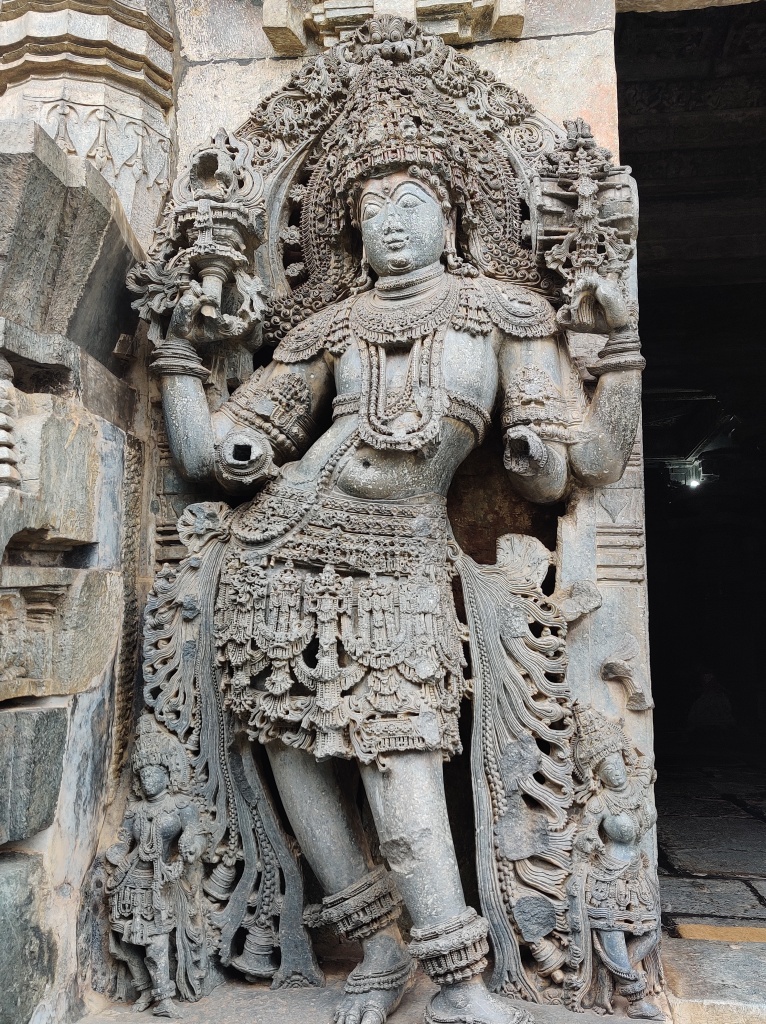


Like most Hoysala temples, this temple is also built in star-shaped pattern over a raised platform. This temple is accessed by four doorways, two in the east, one in the north and the other in the south. These doorways are guarded
by dvarapalakas. In Shaivite temples, the dvarapalaks are said to be Nandi and Mahakal. They are usually seen with four hands holding a Pasha (noose) and Trishula (trident) with their upper hands and one of the lower hands holding a Gada (blunt mace). The lintel on the entrance way shows a beautifully executed Shiva in Tandeshwar form in the centre, flanked on both sides by makara driven by Varuna and his consort.




The southern gateway is definitely more ornate as compared to the rest of the entrances. According to the guide of the day, this was the entrance that was often used by the King since it was much closer to his palace. The palace might not exist today, but you can see the obvious opulence even today. I mean the layer of finely decorated jwellery carved out of stones on the gatekeepers itself is something that cannot be seen even with modern technology on modern jwellery either. Opposite to the eastern doorway, facing it is the two open pillared mandaps enshrining beautiful and gigantic nandi. Of all nandis that are found in India, or specifically at Indian temples, the most ornate ones are the two present here.




The external walls of Halebidu temple are studded with a large number of sculptures, whereas Belur temple is known for its exquisite interiors. The railed parapet or jagati runs all over the temple, all the way from the right side of the north doorway along the whole of east face till the left side of the south doorway. The iconography used ont he paraphet is very typical to the Hoysala style of architecture and symbolism – The elephants (first layer), Lions, scrollwork, horsemen, another layer of scrollwork, puranic or mythological scenes, Makaras, Swans, alternate seated and standing miniatures topped with beadwork, miniature turrets with intervening lions and figures, and the last layer comprising of figurine panels located between double columns.
The exteriors of the temple wall is extensively and ornately carved with many images. These images are not only larger compared to the Kesava temple at Belur, not just in size but also in numbers too. We were told that there are as many as 281 larger images on the western face, out of which 167 are female and the rest are male.







As a Shiva temple, majority of depictions are that of Shiva. Just like Vaishnavism, Shaivism too believes in Shiva incarnations. Bhairava, Virabhadra, Lakulisha, Sharabha, Harihara, Dakshinamurti are considered to be Shiva incarnates. The Shaiva Puranas have also brought out various other forms of Shiva such as Gajasurasamhara Shiva, Tripurantaka Shiva, Andhakanta Shiva, Ekapada Shiva and were often the subject of sculpture art during the development of various Shaiva sects and cults and can be seen here in Halebeedu as well.

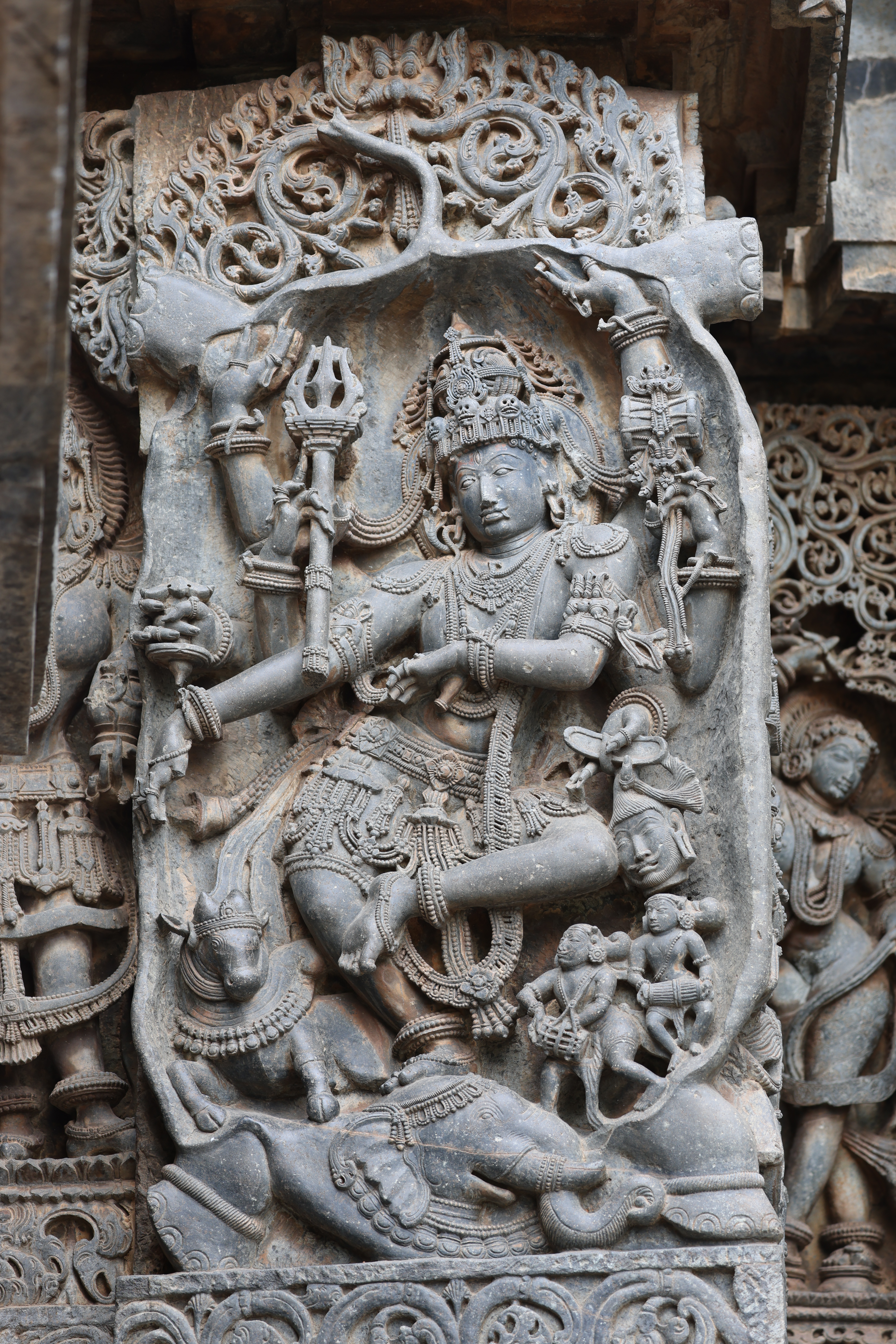


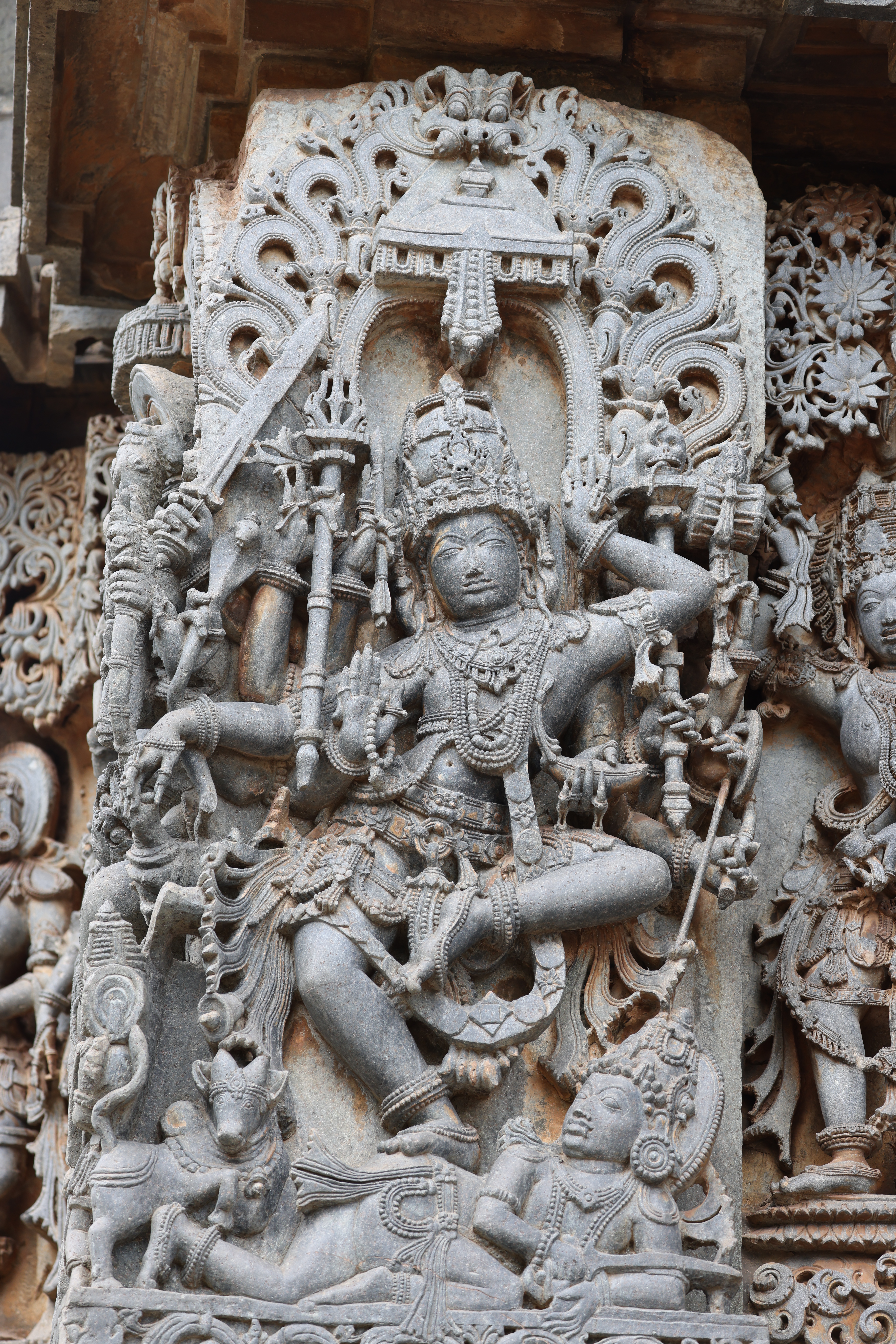


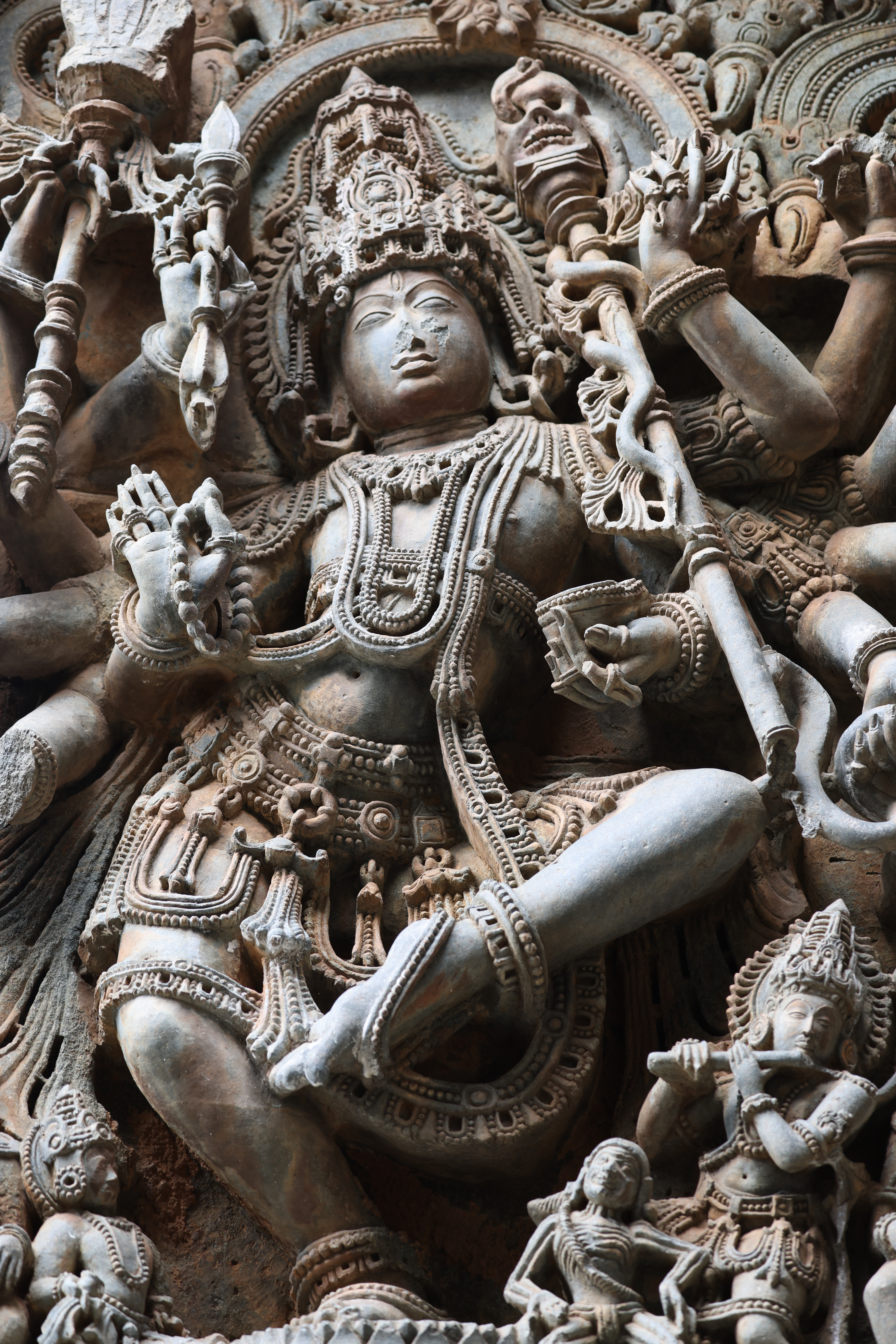
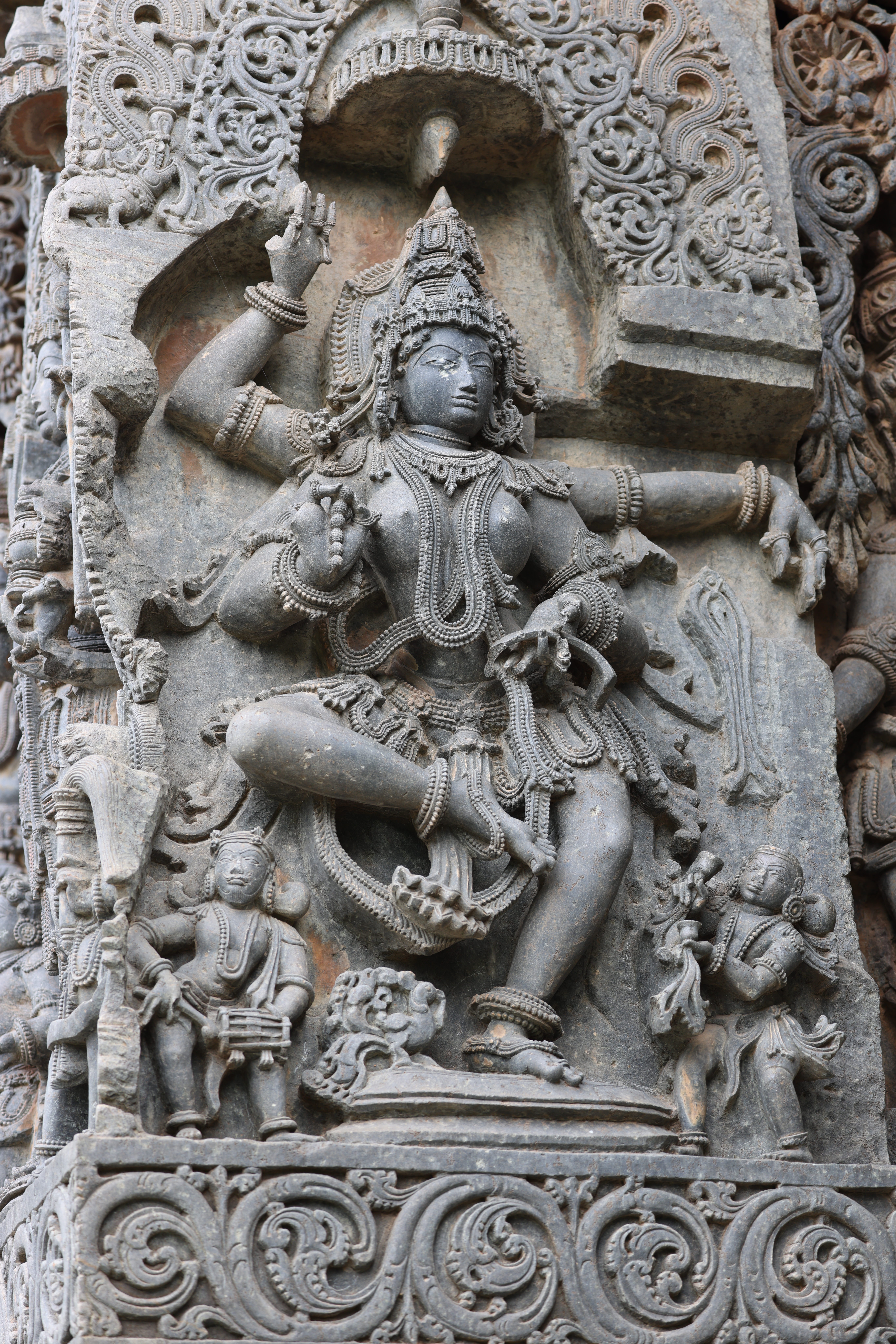



seated with Parvati. Depicted on the Kailasa are Gods and Goddesses with their vahanas





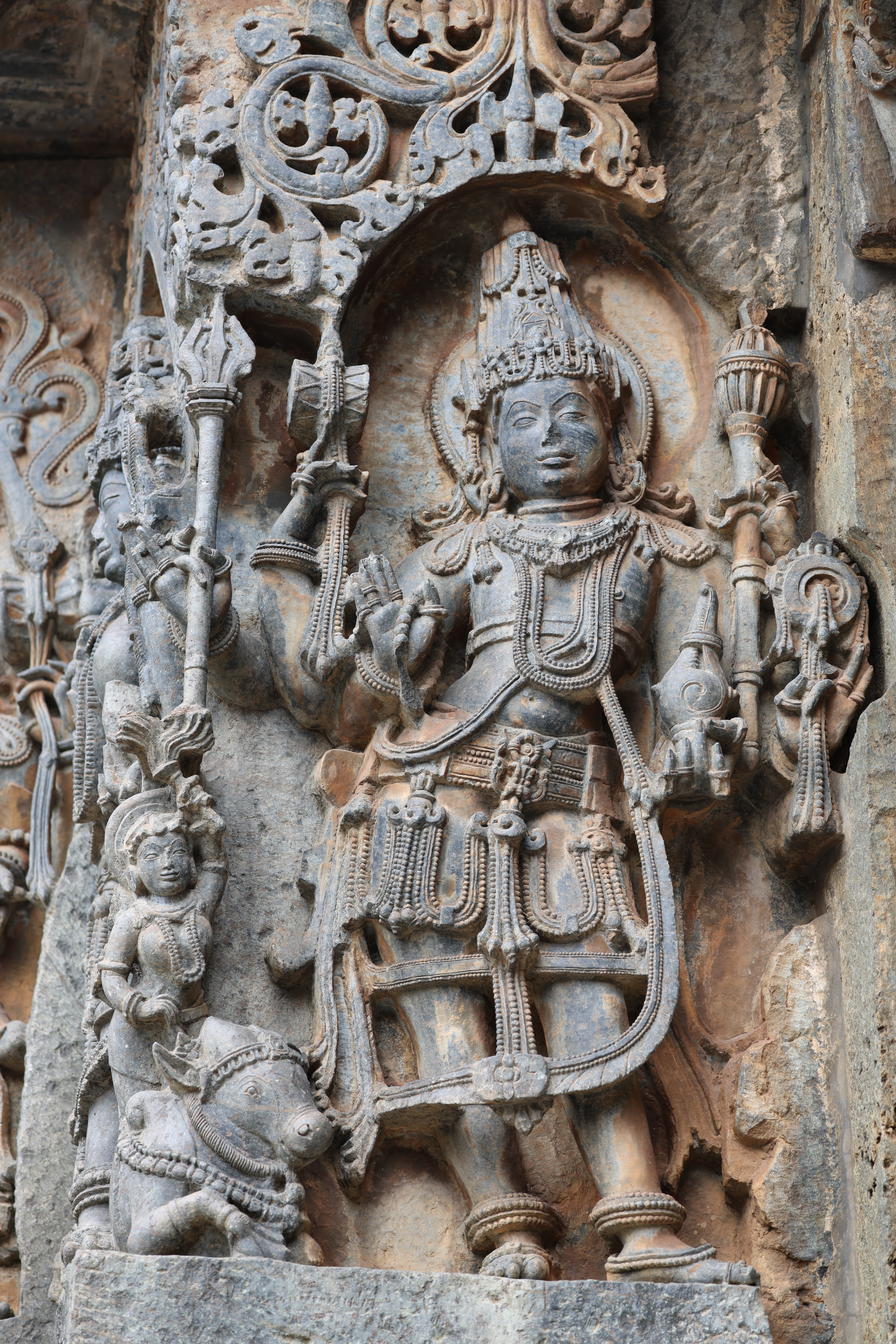





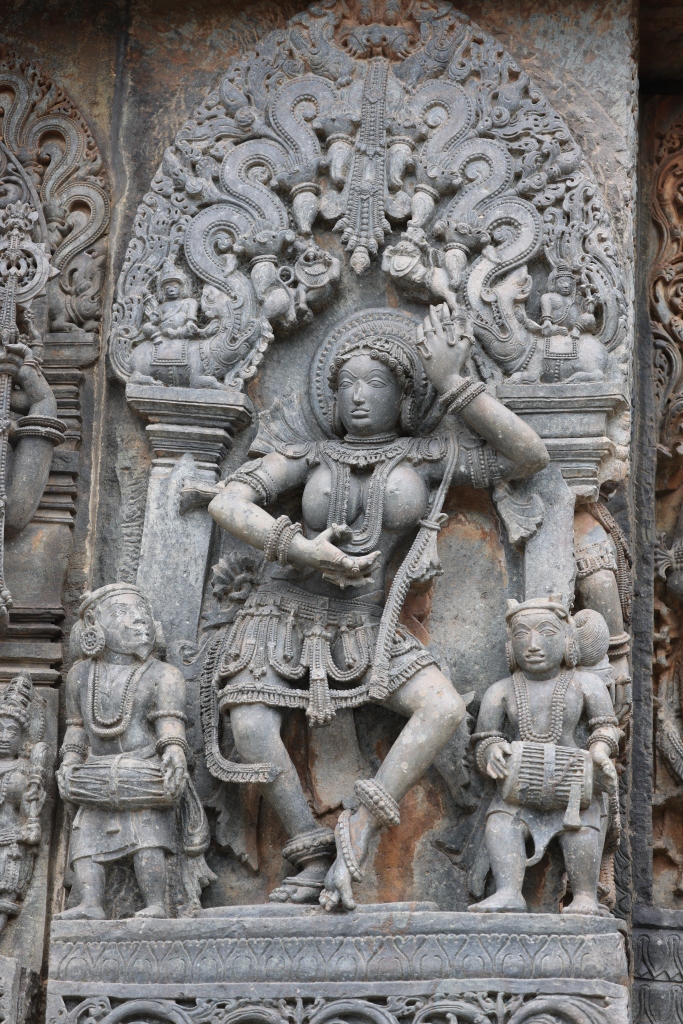






Unlike the Belur temples, the madanikas, a name allocated to the bracket figures of apsaras located at temple eaves, are less in number. While the Madanikas at the exterior of the temple were exemplary and exquisite, keeping in tune with the overall opulence of Hoysalevar temple; Personally, the interior depiction of madanikas were a little disappointing, as compared to its Belur counterpart.








The temple has two shrines with shivalinga, one dedicated to Vishnuvardhan Hoysaleswara (in the name of the king) and another for Shantaleswara (named after Shantala Devi, queen of King Vishnuvardhana).


Both sanctums are flanked by sukanasi followed by the navaranga. Both the sanctum are alike with a beautifully executed doorway and lintels. Each sanctum is guarded by dvarapalakas on either side. The most notable feature of these dvarapalakas is the crown where there is an arrangement of hollow skulls can be seen, in a diminishing order from the center. Besides these dvarapalakas is chuari-bearer on either side of the doorway.

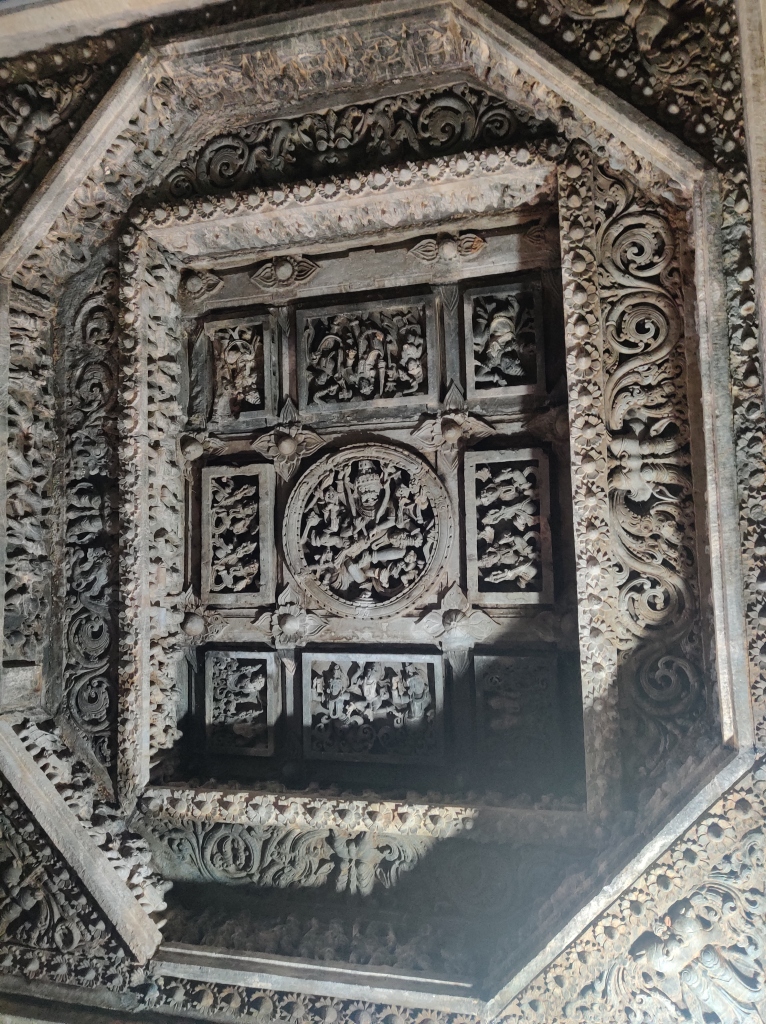

Pro Tip:
Belur is at a distance of 3.5 hrs (150 km) away from Mysore while Halebeedu is 143 km away from Msyore. The distance between the two towns is 17 kms, i.e. around 30 minutes. I had made Mysore as my base for 5 days owing to the Dussera celebrations, hence I decided to combine Belur and Halebeedu as a day trip and rented a car.
Other than the inner sanctum or the shrine, there is absolutely no restrictions to photography. Make sure you carry a flash (if you are using a DSLR) or have your nightmode settings on (for your phone) when you are photographing the temple interiors. Its absolutely exquisite, and equally crowded. Wide lens can be used if its not obviously noticeable. For instance, my dad uses cannon for his photography and his wide lens has a very distinctly white body, and hence, he was flagged by the security personnel at the temple.
The Hoysala series:
- Poetry of Stones – Hoysala temple I: Somnathapur
- Poetry of Stones – Hoysala temple II: Belur
- Poetry of Stones – Hoysala temple III: Halebidu
- Poetry of Stones – Hoysala temple IV: Smaller shrines of Belur
References:
Along with the oral narration from the guide at the temple, the specific stuctural references has been taken from the following books and sites –
- Architectural Wonder The Hoysalesvara Temple Halebid: The Legacy of Hoysala Art & Architecture by Sainath Reddappa
- Ancient India: Art and Archaeology
Related (and not-so related) Posts:







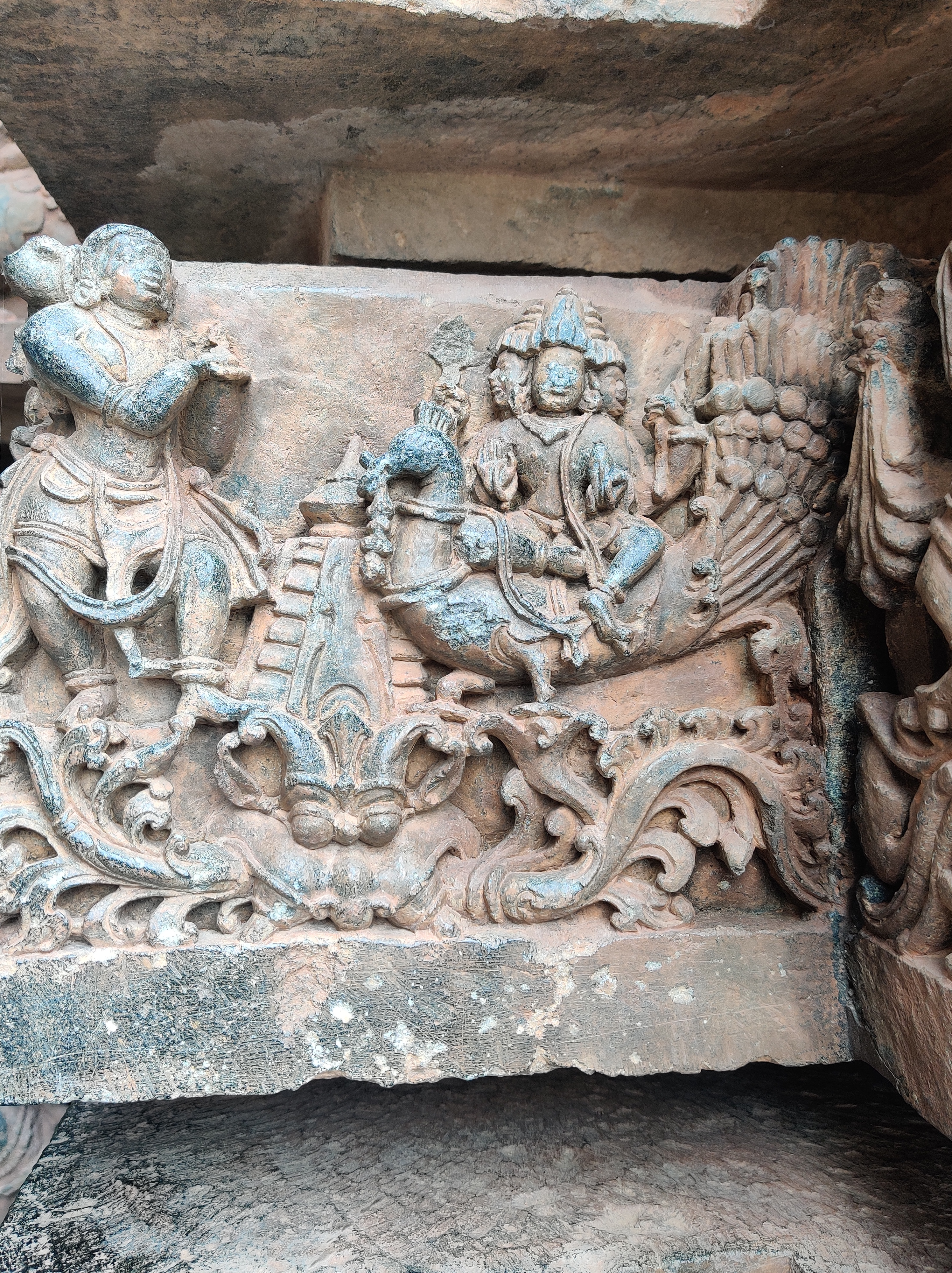



[…] Poetry of Stones – Hoysala temple III: Halebeedu […]
LikeLike
[…] Poetry of Stones – Hoysala temple III: Halebidu […]
LikeLike
[…] Poetry of Stones – Hoysala temple III: Halebidu […]
LikeLike